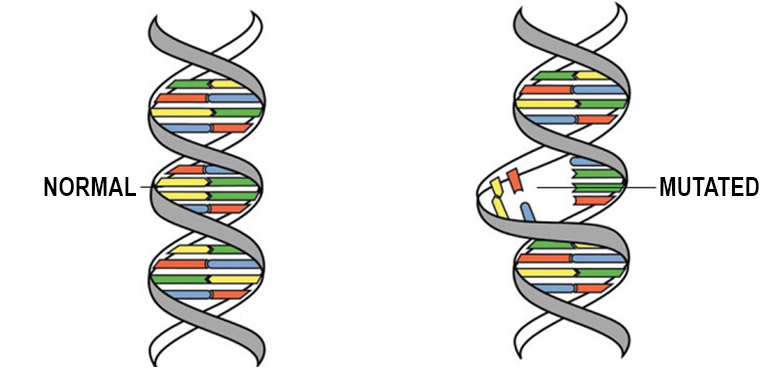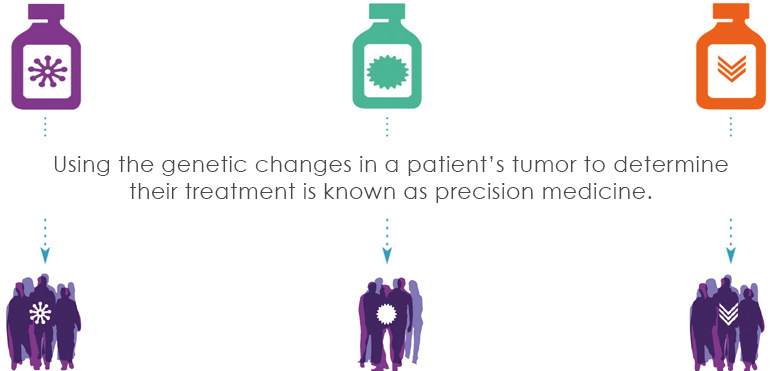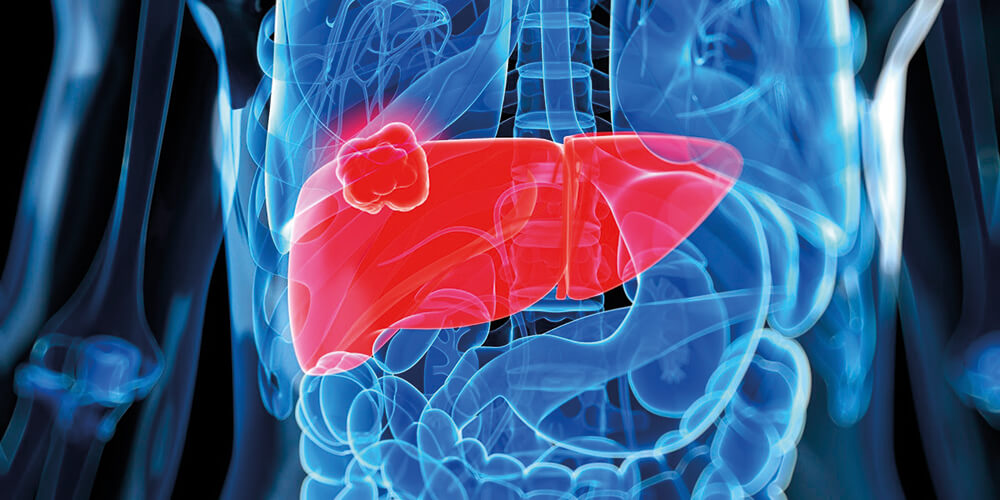Oncogenetic
By yearly monitoring the occurrence of cancer-associated mutations in asymptomatic patients, we can potentially detect the solid cancer prodromal stage, before a clear clinical manifestation. It now acquired that it might take several years between the appearance of a first mutation and the actual development of cancer. Thus, the detection of certain mutations driving the early identification of neoplastic lesions can significantly improve survival rates.
Current diagnostic methods (such as mammography, X-rays, colonoscopy and dermoscopy) detect cancers when they already exist as established tumor. Identifying the cancer-associated mutations as soon as they occur and before tumor is detectable with current diagnostic methods may enable the full eradication of the disease and significantly better outcome for the patient.
A SOMATIC mutation is not present in the zygote, but is acquired during a patient’s life as a consequence to various factors, such as dangerous environment agents or life-style behavior (e.g. cigarette smoke).
SOMATIC mutations may occur in a single cell that by sub sequentially acquiring a proliferative advantage leading to multiple and sustained rounds of cell divisions will carrying on these mutations along in all ‘offspring’ cells.
Nonetheless since SOMATIC mutations are not hereditary, they are not passed onto future generations.
Most cancers result from the accumulation of acquired (SOMATIC) mutations because they are more common than their germline (inherited) counterpart.

Environmental and lifestyle factors such as smoking, poor and fat-rich diet, hormone imbalance and radiation/sun exposure can lead to the acquisition of SOMATIC mutations in cancer-relevant genes.
Occasionally, random mutations occur during cell division, seemingly without cause. During normal cell division, the original cell must replicate its DNA; such process leads to occasional errors and the introduction of mutations within the DNA sequence.

Although our cells have developed a highly sophisticated and efficient DNA replication proofreading system, every cell division represents an new opportunity for a mutation to occur. Usually, healthy cells detect mutations in their DNA sequence and promptly repair them. If particular mutation cannot be repaired, the cell turns up a cell death guided process called apoptosis.
However, if cell death does not occur and the mutation is not repaired, the cell might start dividing and eventually leading to cancer. As we get older, the number of somatic mutations accumulates and our DNA replication proofreading system reduces its efficiency, that is why age poses a greater risk of developing cancer.


Precision medicine is an approach that allows physicians to select treatments based on the genetic abnormalities of each individual patient.
Currently, patients diagnosed with cancer usually receive the same standard of care treatment as others who have the same cancer type or subtype.
As a consequence, not all patients respond equally to a given treatment, and many patients are given sub-optimal therapies.
In contrast, with a precision medicine approach, the mutational profile of each patient serves as a reference for treatment decisions, and allows clinicians to identify the best treatment for each patient.



